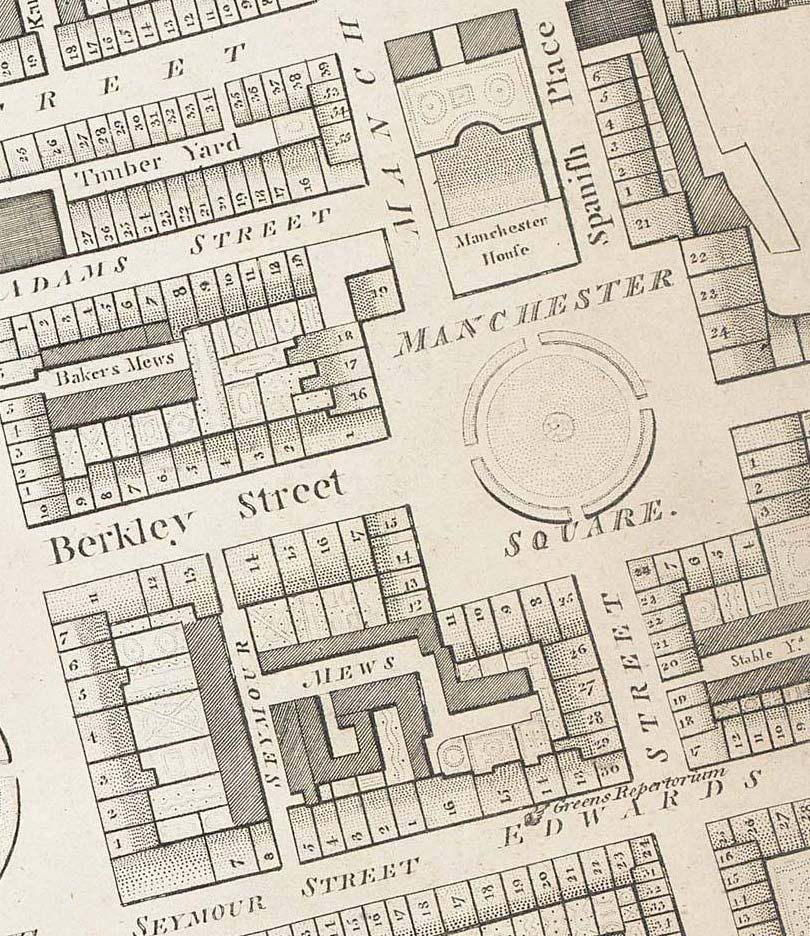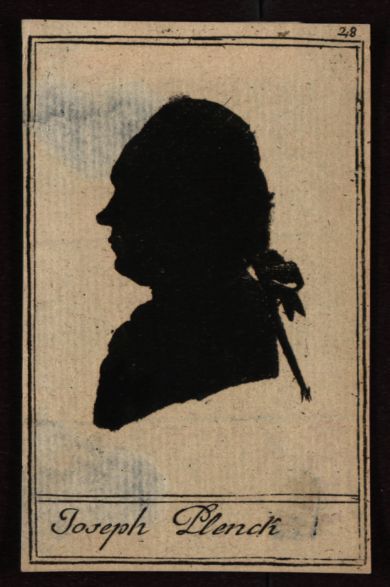|
Robert Hooper (physician)
Robert Hooper (1773–1835) was a British physician, known as a medical writer. Life The son of John Hooper of Marylebone, he was born in London. After a course of medical study in London he was appointed apothecary to the Marylebone workhouse infirmary. He entered Pembroke College, Oxford, on 24 October 1796, graduated B.A. in 1803, M.A. and M.B. in 1804. He was prevented from proceeding to D.M. at the University of Oxford, but he was created M.D. of the University of St Andrews on 16 December 1805, and admitted licentiate of the Royal College of Physicians on 23 December 1805. Settling in Savile Row, Hooper lectured there on the practice of medicine. He made a study of pathology, and formed a collection of illustrative specimens. He retired from practice in 1829, having made a fortune, and lived at Stanmore. Hooper died in Bentinck Street, Manchester Square, on 6 May 1835, in his sixty-third year. Works While still a practising physician, he was an industrious writer. His bo ... [...More Info...] [...Related Items...] OR: [Wikipedia] [Google] [Baidu] |
Marylebone
Marylebone (usually , also , ) is a district in the West End of London, in the City of Westminster. Oxford Street, Europe's busiest shopping street, forms its southern boundary. An Civil parish#Ancient parishes, ancient parish and latterly a metropolitan borough, it merged with the boroughs of Metropolitan Borough of Westminster, Westminster and Metropolitan Borough of Paddington, Paddington to form the new City of Westminster in 1965. Marylebone station lies two miles north-west of Charing Cross. History Marylebone was originally an Civil parish#ancient parishes, Ancient Parish formed to serve the manors (landholdings) of Lileston (in the west, which gives its name to modern Lisson Grove) and Tyburn in the east. The parish is likely to have been in place since at least the twelfth century and will have used the boundaries of the pre-existing manors. The boundaries of the parish were consistent from the late twelfth century to the creation of the Metropolitan Borough which ... [...More Info...] [...Related Items...] OR: [Wikipedia] [Google] [Baidu] |
Manchester Square
Manchester Square is an 18th-century garden square in Marylebone, London. Centred north of Oxford Street it measures internally north-to-south, and across. It is a small Georgian predominantly 1770s-designed instance in central London; construction began around 1776. The north side has a central mansion, Hertford House, flanked by approach ways; its first name was Manchester House — its use is since 1897 as the Wallace Collection (gallery/museum) of fine and decorative arts sits alongside the Madame Tussauds museum and the Wigmore Hall concert rooms. The square forms part of west Marylebone, most of which sees minor but overarching property interests held by one owner (through lease reversions managed as the Portman Estate) among which many buildings have been recognised by statutory protection (as listed buildings). Notable residents Among residents figured: *Admiral Sir Thomas Foley and his noble wife (later widow) at №1; *Julius Benedict, German-born composer, ... [...More Info...] [...Related Items...] OR: [Wikipedia] [Google] [Baidu] |
1835 Deaths
Events January–March * January 7 – anchors off the Chonos Archipelago on her second voyage, with Charles Darwin on board as naturalist. * January 8 – The United States public debt contracts to zero, for the only time in history. * January 24 – Malê Revolt: African slaves of Yoruba Muslim origin revolt in Salvador, Bahia. * January 26 – Queen Maria II of Portugal marries Auguste de Beauharnais, 2nd Duke of Leuchtenberg, in Lisbon; he dies only two months later. * January 26 – Saint Paul's in Macau largely destroyed by fire after a typhoon hits. * January 30 – An assassination is attempted against United States President Andrew Jackson in the United States Capitol (the first assassination attempt against a President of the United States). * February 1 – Slavery is abolished in Mauritius. * February 20 – 1835 Concepción earthquake: Concepción, Chile, is destroyed by an earthquake; the resulting tsunami destroys the neighboring city of Talcahuano. * M ... [...More Info...] [...Related Items...] OR: [Wikipedia] [Google] [Baidu] |
1773 Births
Events January–March * January 1 – The hymn that becomes known as ''Amazing Grace'', at this time titled "1 Chronicles 17:16–17", is first used to accompany a sermon led by curate John Newton in the town of Olney, Buckinghamshire, England. * January 12 – The first museum in the American colonies is established in Charleston, South Carolina; in 1915, it is formally incorporated as the Charleston Museum. * January 17 – Second voyage of James Cook: Captain Cook in HMS Resolution (1771) becomes the first European explorer to cross the Antarctic Circle. * January 18 – The first opera performance in the Swedish language, ''Thetis and Phelée'', performed by Carl Stenborg and Elisabeth Olin in Bollhuset in Stockholm, Sweden, marks the establishment of the Royal Swedish Opera. * February 8 – The Grand Council of Poland meets in Warsaw, summoned by a circular letter from King Stanisław August Poniatowski to respond to the Kingdom's threate ... [...More Info...] [...Related Items...] OR: [Wikipedia] [Google] [Baidu] |
John Howship
John Howship FRS (1781 – 22 January 1841) was an English surgeon remembered for describing the Howship–Romberg sign. He was an assistant surgeon at St. George's Infirmary, London and lecturer at St. George's Hospital Medical School. He was a member of the council of the Royal College of Surgeons at the time of his death from a lower leg abscess An abscess is a collection of pus that has built up within the tissue of the body. Signs and symptoms of abscesses include redness, pain, warmth, and swelling. The swelling may feel fluid-filled when pressed. The area of redness often extends b .... Howship was an associate of Robert Hooper, working on illustrations for Hooper's books. He also assisted John Heaviside with exhibits for his museum. Notes External links * {{DEFAULTSORT:Howship, John English surgeons 1781 births 1841 deaths ... [...More Info...] [...Related Items...] OR: [Wikipedia] [Google] [Baidu] |
John Quincy (medical Writer)
John Quincy (died 1722) was an English apothecary known as a medical writer. Life He was apprenticed to an apothecary, and afterwards practised medicine as an apothecary in London. He was a Dissenter and a Whig, a friend of Dr. Richard Mead, and an enemy of Dr. John Woodward. He studied mathematics and the philosophy of Isaac Newton. He died in 1722. Works He knew little of clinical medicine, and was only skilful in the arrangement of drugs in prescriptions. He considered dried millipedes good for tuberculous lymphatic glands, but thought the royal touch for scrofula superstitious. He received the degree of M.D. from the University of Edinburgh for his ‘Medicina Statica Britannica’ (1712), a translation of the ‘Aphorisms’ of Sanctorius, of which a second edition appeared in 1720. Joseph Collet, governor of Fort St. George, was one of his patrons, and Quincy printed in 1713 a laudatory poem on their common friend, the Rev. Joseph Stennett. He published in 1717 a ‘Lexicon ... [...More Info...] [...Related Items...] OR: [Wikipedia] [Google] [Baidu] |
Joseph Jakob Plenck
Joseph Jakob Ritter Plenk or Plenck (28 November 1738 – 24 August 1807) was an Austrian physician and polymath. He is now known as a pioneer dermatologist. Life Plenck was born on 28 November 1738 in Vienna en, Viennese , iso_code = AT-9 , registration_plate = W , postal_code_type = Postal code , postal_code = , timezone = CET , utc_offset = +1 , timezone_DST ..., although some sources give a birth year of 1732. He graduated at the University of Vienna in 1763, and was a follower of Heinrich Johann Nepomuk von Crantz. An academic at the University of Basel in 1770, he then taught at Tymau, Buda and Pesth. In 1783 he moved to the Medical University of Vienna#Museum, Josephinum in Vienna. He died on 24 August 1807. In 1861, botanist Siegfried Reisseck published ''Plenckia'', a genus of flowering plants from South America, belonging to the family Celastraceae and named in honour of Joseph ... [...More Info...] [...Related Items...] OR: [Wikipedia] [Google] [Baidu] |




.jpg)

